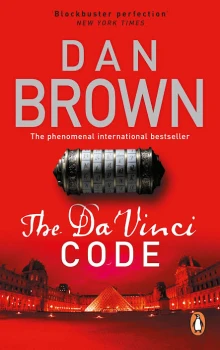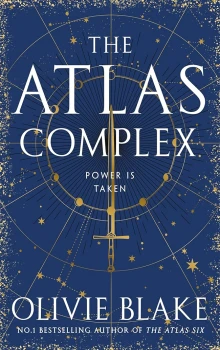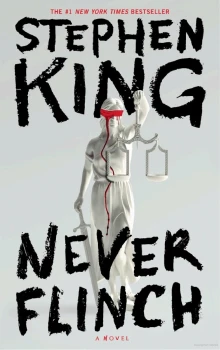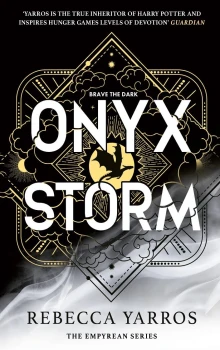“Ten digits,” Sophie said, her cryptologic senses tingling as she studied the printout.
13-3-2-21-1-1-8-5
Grand-père wrote his account number on the Louvre floor!
When Sophie had first seen the scrambled Fibonacci sequence on the parquet, she had
assumed its sole purpose was to encourage DCPJ to call in their cryptographers and get
Sophie involved. Later, she realized the numbers were also a clue as to how to decipher
the other lines—a sequence out of order . . . a numeric anagram. Now, utterly amazed,
she saw the numbers had a more important meaning still. They were almost certainly the
final key to opening her grandfather's mysterious safe-deposit box.
“He was the master of double-entendres,” Sophie said, turning to Langdon. “He loved
anything with multiple layers of meaning. Codes within codes.”
Langdon was already moving toward the electronic podium near the conveyor belt.
Sophie grabbed the computer printout and followed.
The podium had a keypad similar to that of a bank ATM terminal. The screen
displayed the bank's cruciform logo. Beside the keypad was a triangular hole. Sophie
wasted no time inserting the shaft of her key into the hole.
The screen refreshed instantly.
ACCOUNT NUMBER:
_ _ _ _ _ _ _ _ _ _
The cursor blinked. Waiting.
Ten digits. Sophie read the numbers off the printout, and Langdon typed them in.
ACCOUNT NUMBER:
1332211185
When he had typed the last digit, the screen refreshed again. A message in several
languages appeared. English was on top.
CAUTION:
Before you strike the enter key, please check the accuracy of your account
number. For your own security, if the computer does not recognize your
account number, this system will automatically shut down.
“Fonction terminer,” Sophie said, frowning. “Looks like we only get one try.”
Standard ATM machines allowed users three attempts to type a PIN before confiscating
their bank card. This was obviously no ordinary cash machine.
“The number looks right,” Langdon confirmed, carefully checking what they had
typed and comparing it to the printout. He motioned to the ENTER key. “Fire away.”
Sophie extended her index finger toward the keypad, but hesitated, an odd thought
now hitting her.
“Go ahead,” Langdon urged. “Vernet will be back soon.”
“No.” She pulled her hand away. “This isn't the right account number.”
“Of course it is! Ten digits. What else would it be?”
“It's too random.”
Too random? Langdon could not have disagreed more. Every bank advised its
customers to choose PINs at random so nobody could guess them. Certainly clients here
would be advised to choose their account numbers at random.
Sophie deleted everything she had just typed in and looked up at Langdon, her gaze
self-assured. “It's far too coincidental that this supposedly random account number could
be rearranged to form the Fibonacci sequence.”
Langdon realized she had a point. Earlier, Sophie had rearranged this account number
into the Fibonacci sequence. What were the odds of being able to do that?
Sophie was at the keypad again, entering a different number, as if from memory.
“Moreover, with my grandfather's love of symbolism and codes, it seems to follow that
he would have chosen an account number that had meaning to him, something he could
easily remember.” She finished typing the entry and gave a sly smile. “Something that
appeared random . . . but was not.”
Langdon looked at the screen.
ACCOUNT NUMBER:
1123581321
It took him an instant, but when Langdon spotted it, he knew she was right.
The Fibonacci sequence.
1-1-2-3-5-8-13-21
When the Fibonacci sequence was melded into a single ten-digit number, it became
virtually unrecognizable. Easy to remember, and yet seemingly random. A brilliant ten-
digit code that Saunière would never forget. Furthermore, it perfectly explained why the
scrambled numbers on the Louvre floor could be rearranged to form the famous
progression.
Sophie reached down and pressed the ENTER key.
Nothing happened.
At least nothing they could detect.
At that moment, beneath them, in the bank's cavernous subterranean vault, a robotic claw
sprang to life. Sliding on a double-axis transport system attached to the ceiling, the claw
headed off in search of the proper coordinates. On the cement floor below, hundreds of
identical plastic crates lay aligned on an enormous grid . . . like rows of small coffins in
an underground crypt.
Whirring to a stop over the correct spot on the floor, the claw dropped down, an
electric eye confirming the bar code on the box. Then, with computer precision, the claw
grasped the heavy handle and hoisted the crate vertically. New gears engaged, and the
claw transported the box to the far side of the vault, coming to a stop over a stationary
conveyor belt.
Gently now, the retrieval arm set down the crate and retracted.
Once the arm was clear, the conveyor belt whirred to life. . . .
Upstairs, Sophie and Langdon exhaled in relief to see the conveyor belt move. Standing
beside the belt, they felt like weary travelers at baggage claim awaiting a mysterious piece
of luggage whose contents were unknown.
The conveyor belt entered the room on their right through a narrow slit beneath a
retractable door. The metal door slid up, and a huge plastic box appeared, emerging from
the depths on the inclined conveyor belt. The box was black, heavy molded plastic, and
far larger than she imagined. It looked like an air-freight pet transport crate without any
airholes.
The box coasted to a stop directly in front of them.
Langdon and Sophie stood there, silent, staring at the mysterious container.
Like everything else about this bank, this crate was industrial—metal clasps, a bar code
sticker on top, and molded heavy-duty handle. Sophie thought it looked like a giant
toolbox.
Wasting no time, Sophie unhooked the two buckles facing her. Then she glanced over
at Langdon. Together, they raised the heavy lid and let it fall back.
Stepping forward, they peered down into the crate.
At first glance, Sophie thought the crate was empty. Then she saw something. Sitting at
the bottom of the crate. A lone item.
The polished wooden box was about the size of a shoebox and had ornate hinges. The
wood was a lustrous deep purple with a strong grain. Rosewood, Sophie realized. Her
grandfather's favorite. The lid bore a beautiful inlaid design of a rose. She and Langdon
exchanged puzzled looks. Sophie leaned in and grabbed the box, lifting it out.
My God, it's heavy!
She carried it gingerly to a large receiving table and set it down. Langdon stood beside
her, both of them staring at the small treasure chest her grandfather apparently had sent
them to retrieve.
Langdon stared in wonderment at the lid's hand-carved inlay—a five-petal rose. He
had seen this type of rose many times. “The five-petal rose,” he whispered, “is a Priory
symbol for the Holy Grail.”
Sophie turned and looked at him. Langdon could see what she was thinking, and he
was thinking it too. The dimensions of the box, the apparent weight of its contents, and a
Priory symbol for the Grail all seemed to imply one unfathomable conclusion. The Cup
of Christ is in this wooden box. Langdon again told himself it was impossible.
“It's a perfect size,” Sophie whispered, “to hold . . . a chalice.”
It can't be a chalice.
Sophie pulled the box toward her across the table, preparing to open it. As she moved
it, though, something unexpected happened. The box let out an odd gurgling sound.
Langdon did a double take. There's liquid inside?
Sophie looked equally confused. “Did you just hear . . .?”
Langdon nodded, lost. “Liquid.”
Reaching forward, Sophie slowly unhooked the clasp and raised the lid.
The object inside was unlike anything Langdon had ever seen. One thing was
immediately clear to both of them, however. This was definitely not the Cup of Christ.






